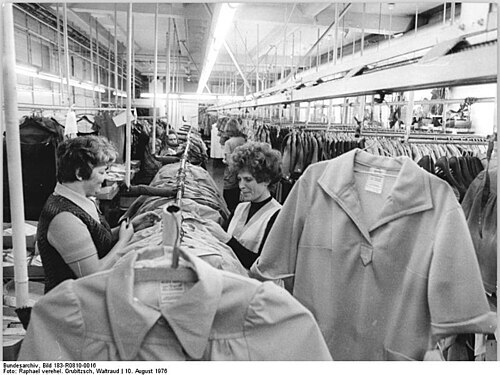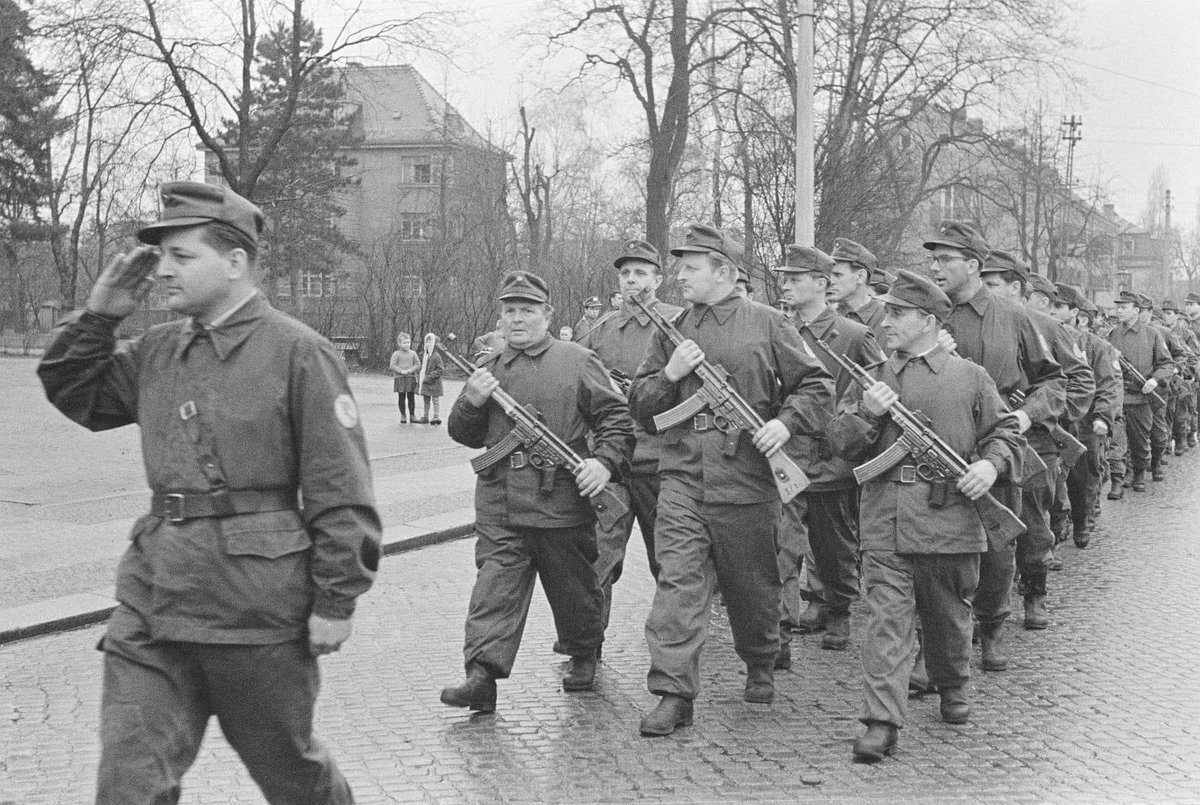Introduction to East German Tactical Gear
Posted by Peter Naroni - WW2 and Cold War Historian on Feb 23rd 2024
Introduction to East German Tactical Gear:
East Germany, established in 1949 following World War II, was a socialist state under the influence of the Soviet Union. The NVA was the armed forces of East Germany, tasked with defending the state against perceived threats from NATO and the West. As such, East German tactical gear was designed with a focus on functionality, durability, and affordability, reflecting the resources and priorities of the GDR.
Uniforms and Clothing:
East German uniforms were distinctive in their design and color scheme. The standard uniform consisted of a grey-green jacket and trousers, with a distinctive collar and shoulder straps. The uniform was designed to provide camouflage in the wooded and rural terrain of East Germany. Additionally, soldiers wore a steel helmet, leather boots, and various insignia denoting rank and branch of service.

Produktion bei Vestis circa 1975
Field Equipment:
East German soldiers were equipped with a range of gear to support them in the field. This included backpacks, webbing, and pouches for carrying ammunition, rations, and other essential items. The standard issue rifle for the NVA was the AK-47 variant, known as the MPi-KM, which was often accompanied by a bayonet and cleaning kit.
Grenade Pouches and Ammo Pouches:
Grenade pouches and ammo pouches were essential components of East German soldiers' load-bearing equipment. These pouches were typically made from canvas or nylon and were designed to securely hold grenades, magazines, and other essential items.
The grenade pouches were typically attached to the soldier's belt or webbing and featured compartments for individual grenades as seen here. They were designed for quick and easy access during combat situations.
East German Ammo pouches, on the other hand, were used to carry rifle magazines and ammunition. These pouches varied in design depending on the specific firearm being used, but they were typically designed to hold multiple magazines securely while still allowing for quick reloads.
Manufacturers: The majority of grenade pouches and ammo pouches were produced by state-owned factories in East Germany, such as VEB Pölbitz and VEB Bekleidungswerke. These factories specialized in military textile production and supplied a wide range of equipment to the NVA.
Personal Protective Equipment:
Protection for soldiers was also a priority for the NVA. East German soldiers were issued with helmets and body armor, although these were often of older designs compared to their NATO counterparts. Gas masks were also standard issue, reflecting the perceived threat of chemical warfare during the Cold War.

Members of the East German Volkspolizei parading through the streets of
Neustrelitz in 1955. They are armed with World War II German StG 44 rifles.
Helmet:
The helmet issued to East German soldiers was the M56 Stahlhelm, which was based on the design of the German helmet used during World War II. The M56 featured a distinctive shape with a flared rim and a large ventilation hole on the top.
Manufacturers: The M56 Stahlhelm was manufactured by several companies in East Germany, including VEB Sachsenring Automobilwerke Zwickau and VEB Robotron-Meßelektronik 'Otto Schön' Dresden. These companies were responsible for producing a wide range of military equipment for the NVA.
Boots:
East German soldiers were issued with leather boots designed to provide protection and support in various terrain conditions. These boots were typically black or brown in color and featured a lace-up design with a reinforced toe and heel.
Manufacturers: The boots worn by East German soldiers were produced by a variety of manufacturers, including VEB Schuhwerk Coswig and VEB Schuh-Kombinat Pößneck. These companies specialized in footwear production and supplied boots to the NVA as well as other branches of the East German armed forces.
Communication and Navigation:
We can’t forget communication and navigation equipment which were absolutely essential for coordinating military operations. East German soldiers were equipped with radios, field telephones, and map reading tools to facilitate communication and movement on the battlefield. These devices were often rugged and reliable, designed to withstand harsh conditions.
Who Manufactured All This Stuff?
The production of East German tactical gear was centralized under the control of state-owned factories and enterprises. These factories were part of the larger East German economy, which operated under a socialist planned economy system.
Some of the key manufacturers of East German tactical gear included:
- VEB Bekleidungswerke
- VEB Pölbitz
- VEB Sachsenring Automobilwerke Zwickau
- VEB Robotron-Meßelektronik 'Otto Schön' Dresden
- VEB Schuhwerk Coswig
- VEB Schuh-Kombinat Pößneck
These manufacturers were responsible for producing a wide range of military equipment, including uniforms, helmets, boots, pouches, and other essential gear for the NVA.
Conclusion:
East German tactical gear provides a unique insight into the military capabilities and priorities of the GDR during the Cold War. From uniforms to firearms, East German equipment was designed with functionality and affordability in mind, reflecting the resources and constraints of the socialist state. Today, East German tactical gear remains an extremely popular, and increasingly rare, collector's item and serves as a reminder of a bygone era in European history.

